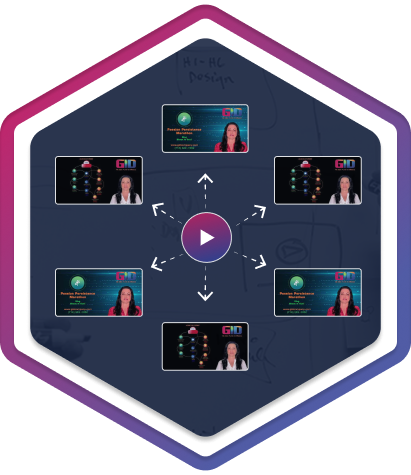Product Design Services - GID Company
Expert Product Designers in California, USA

Expert Product Design Services
By Investing in Product Design, You Can:
- Differentiate Your Product: Stand out in a crowded market with a unique and memorable design that captures attention and communicates your brand’s values.
- Enhance User Experience: Create intuitive, easy-to-use products that solve problems and delight customers, fostering loyalty and positive word-of-mouth.
- Increase Market Share: Attract and retain customers with a well-designed product that offers superior functionality, aesthetics, and user experience.
- Boost Profitability: A well-designed product can command a premium price, leading to higher profit margins and increased revenue.
- Reduce Costs: Optimize product design for manufacturability, reducing production costs and improving efficiency throughout the product lifecycle.
At GID Company, we believe that exceptional product design is a strategic investment that yields significant returns. Partner with us to elevate your product’s form and function, create unforgettable user experiences, and drive lasting business success.
Product Design Services What's included?
Expert Concept Design for Manufacturing [DFM]
GID Company's product design services are a comprehensive suite of solutions aimed at transforming your product ideas into captivating, user-centric designs that resonate with your target market. We take a holistic approach "measure twice cut once", considering every aspect of the product's form and function, to create designs that not only look great but also deliver exceptional user experiences. Our product design services encompass:
Research & Discovery
We delve deep into understanding your target audience, their needs, and their pain points. We conduct thorough market research and competitive analysis to identify opportunities for differentiation and innovation.
Concept Development & Ideation
We brainstorm creative concepts that align with your brand's values and resonate with your target market. We explore various design directions and create visual representations of potential product concepts.
Design Refinement & Prototyping
We refine the chosen concept into a detailed design, utilizing 3D modeling and prototyping to bring your product to life. We test and iterate on the design to ensure optimal functionality, user experience, and manufacturability.
User-Centered Design
We prioritize user needs and ensure a seamless and intuitive user experience throughout the product interaction. This includes designing interfaces that are easy to navigate and understand, and crafting experiences that are enjoyable and efficient.
Design for Manufacturing (DFM)
We optimize your product design for manufacturability, considering materials, production processes, and cost constraints. This ensures your product can be produced efficiently and cost-effectively without compromising on quality or functionality.
From Idea to Reality - Watch How We Do It!
Explore our videos to see how we seamlessly transform your ideas into reality.

Our Product Design Process - GID Company
Leading Product Design Company in California, USA
-
Discovery & Research
We immerse ourselves in your brand, target market, and product goals. Through in-depth research and analysis, we gain a deep understanding of user needs, preferences, and pain points. -
Concept Development
We translate insights into innovative product concepts, exploring multiple design directions and creating visual representations that bring your vision to life. -
Design Refinement
We select the most promising concept and refine it into a detailed design, considering aesthetics, functionality, user experience, and manufacturability. We utilize 3D modeling and rendering to create realistic visualizations of the final product. -
Prototyping & Testing
We build physical prototypes to test and validate the design, ensuring it meets both functional and aesthetic requirements. We gather user feedback and iterate on the design to achieve optimal performance and user satisfaction. -
Engineering & Technical Design
Our engineers work closely with designers to refine the product's technical specifications, ensuring it is feasible to manufacture and meets all relevant safety and regulatory standards. -
Material Selection & Finishes
We carefully select materials and finishes that align with your brand identity and product requirements, considering factors like durability, sustainability, and cost-effectiveness. -
Manufacturing & Production
We collaborate with trusted manufacturing partners to bring your product to life, ensuring quality control and adherence to design specifications throughout the production process. -
Launch & Beyond
We support you in launching your product into the market, providing guidance on marketing, branding, and post-launch support to ensure your product's continued success.
Why GID Company as Product Design Firm?
Leading Product Design Company Near You
GID Company is your trusted partner in transforming product visions into market-ready realities. We offer a unique blend of creative flair, technical expertise, and strategic thinking to ensure your product design not only captivates users but also drives business success. Here's why GID is the ideal choice for your design needs:
User-Centric Focus
We place the user at the heart of our design process, conducting thorough research to understand their needs, preferences, and pain points. This ensures your product is designed to solve real problems and deliver exceptional user experiences.
Comprehensive Design Solutions
We offer a full suite of product design services, from initial concept development and prototyping to final production and launch. We handle every aspect of the design process, ensuring a seamless and successful outcome.
Collaborative Partnership
We believe in open communication and collaboration throughout the entire design process. We work closely with you to understand your vision, goals, and constraints, ensuring your input is valued and incorporated into the final design.
Commitment to Excellence
We strive for excellence in every project we undertake. We are passionate about creating products that not only meet but exceed your expectations, delivering designs that are both innovative and commercially successful.
Not Sure Where To Start?
Call JIM
Frequently Asked Questions - FAQs
-
What is a product service design?
Product service design focuses on creating both the physical product and the services around it that enhance the user experience. At GID Company, we offer comprehensive Product Design services that not only develop the product but also consider the entire user interaction, ensuring functionality and satisfaction at every touchpoint.
-
How much does product design cost?
The cost of Product Design can vary depending on the complexity of the project, materials, and design needs. Being a leading Product Design Firm, GID Company offers tailored pricing to suit different budgets while ensuring high-quality designs that are market-ready and cost-effective to produce.
-
What does a product design company do?
A Design company specializes in turning concepts into functional, manufacturable products. GID Company’s Product Design services include idea generation, concept development, prototyping, testing, and preparing products for manufacturing, ensuring a seamless transition from concept to market.
-
What are some examples of product design?
Examples of Product Design include consumer electronics, medical devices, industrial tools, and household appliances. GID Company’s experience spans multiple industries, allowing us to create innovative, market-leading products that meet specific client needs.
-
How does GID Company approach product design?
We take a user-centric approach, prioritizing the needs and preferences of your target audience. We conduct thorough research, brainstorm creative concepts, and refine designs through prototyping and testing to ensure the final product delivers exceptional user experiences. GID Company is a leading Product Design Agency based in California, USA.
-
What is the typical timeline for a product design project with GID Company?
The timeline for a design project varies depending on the scope and complexity of the project. However, we work closely with our clients to establish realistic timelines and milestones, ensuring timely delivery without compromising on quality or creativity.
-
What is the difference between product designer and service designer?
A product designer focuses on the physical product’s form and function, while a service designer concentrates on creating systems that improve the overall user experience, including both physical products and intangible services. At GID Company, we integrate both disciplines to offer Expert Design services that ensure the success of your product in the market.
-
How does GID Company ensure the manufacturability of product designs?
We incorporate Design for Manufacturing (DFM) principles throughout the design process, considering materials, production processes, and cost constraints. This ensures your product can be manufactured efficiently and cost-effectively without sacrificing quality or functionality.
-
What is the cost of product design services with GID Company?
The cost of our product design services depends on the scope and complexity of your project. We offer flexible pricing models that can be tailored to your specific needs and budget. Contact us today for a free consultation to discuss your project and receive a personalized quote.
-
What are the types of product design?
The types of Product Design include:
- Industrial Design
- User Experience Design
- Engineering Design
- Aesthetic Design
From USA based Product Design Companies, GID Company offers expertise in all these areas, providing comprehensive design services that align with your vision and business goals.















